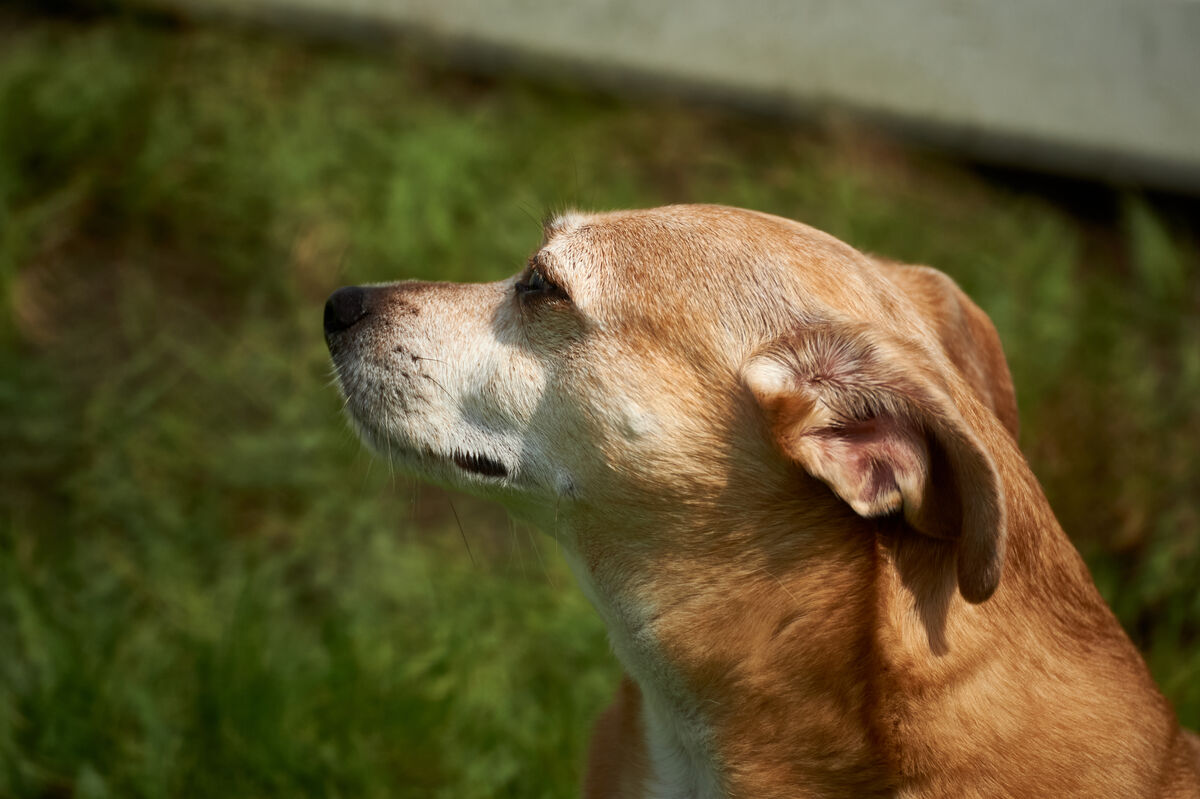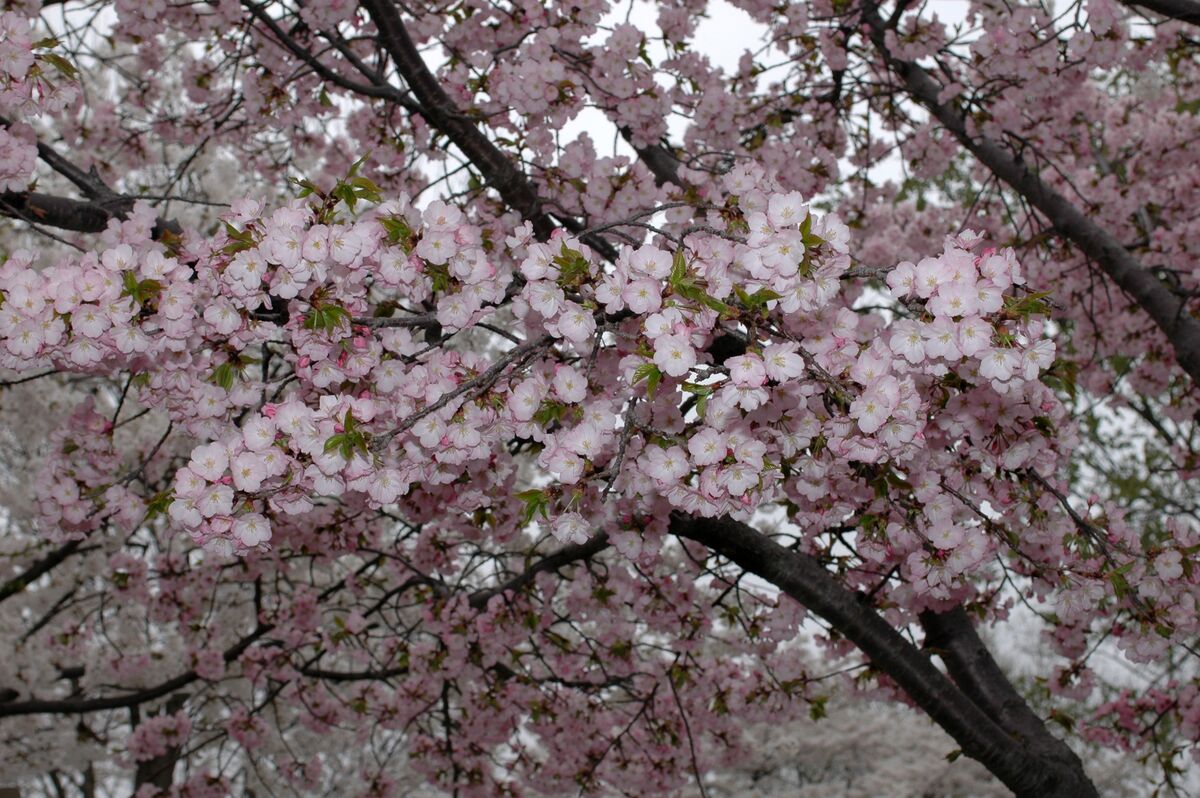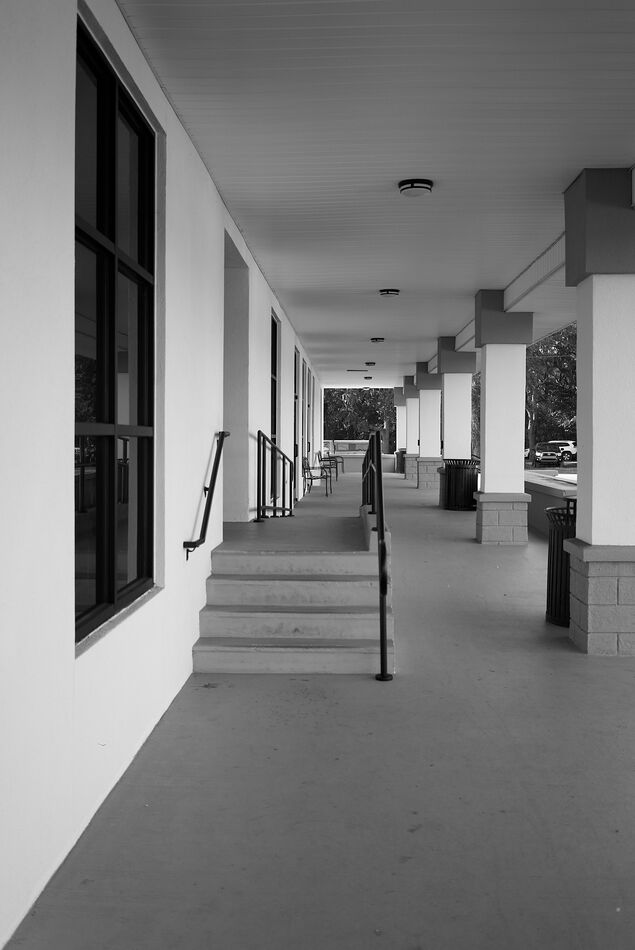Sony vs Viltrox lens comparison
Mar 24, 2024 12:30:48 #
Mar 24, 2024 12:59:08 #
Canisdirus wrote:
So the lower resolution compromise...is just that...a compromise.
In 5 years, you may just be shooting with a higher MP body...and then you have a lens that you loved...look anemic.
In 5 years, you may just be shooting with a higher MP body...and then you have a lens that you loved...look anemic.
Why would I want to capture something that nobody can possibly see? Why invest thousands of dollars to make that happen? It should not be hard to understand why it can be a waste of money.
Does 300 PPI ring a bell? It's the highest resolution that anyone with normal vision can appreciate from a distance of about 10 inches. It's used as the basis for DOF calculations because that's the threshold of our ability to distinguish sharpness.
An 8x12 inch print viewed from 10 inches (the normal viewing distance) can contain 8x12x300x300=8.64MP, as sharp as the eye can see.
As you make larger and larger prints, the viewer will back away from them. The same 8.64MP still works fine. A 16x24 in print viewed from 20 inches only needs a resolution of 150ppi to look equally sharp. It's the same 8.64MP.
When the D700 came along in 2008, it was clear that 12MP might just be ideal, just a little more resolution than necessary.
If you applied the same 300ppi resolution and viewed the print from 10 inches is would take 34.56MP. You could not possibly see it all and no normal viewer could either. So Nikon introduced the D800 with 36MP in 2012. They knew that photographers are not normal. They are easily persuaded to spend lots of money for something they don't really need. Competitors joined the MP race, not to make better pictures, but to make more money.
There is still an incentive for the manufacturers to offer more resolution because it sells to photographers who don't do the math. They obsess over whether they can see a difference between two lenses at 45 or 61MP when they view them at 100% resolution on their computer. But they are the only ones who will see that. A normal viewer won't see the difference, even if you try to explain it to them.
If 12MP is so good, 24MP may be twice as good. That's why it has become the most popular resolution for modern cameras. There are many reasons why it's a good place to stop.
I always knew that I didn't need more than 24MP. I initially acquired a used Z7 just to test my lenses. That's the only practical use I have for 45MP. I got rid several obvious losers, but I hung on to my best manual focus lenses and a couple of Nikon autofocus lenses.
I can't see any difference between images that I export for printing between the Z7 and the A7 III. That means that my lens tests worked.
And nobody is going to see any difference in images I create to fill 2k or 4k displays.
Mar 24, 2024 13:19:59 #
zug55
Loc: Naivasha, Kenya, and Austin, Texas
Canisdirus wrote:
That's true of all lenses. br br Glass is a longe... (show quote)
I would not disagree with this. However, many people do not shoot at 61MP now and may not in five years. In that case, a test that specifically examines a lens when attached to a 61MP sensor may not be as relevant.
Mar 24, 2024 13:20:52 #
gwilliams6 wrote:
Look at this review by SAB for your inquiries: https://sonyalpha.blog/2023/10/16/viltrox-28mm-f1-8/
And with their price being almost the same, why would anyone choose the lesser image quality lens, not me, ever.
Cheers and best to you.
And with their price being almost the same, why would anyone choose the lesser image quality lens, not me, ever.
Cheers and best to you.
As someone who just blew $6000 on a 24MP camera, you should realize that MP is not the most important feature of a camera.
gwilliams6 wrote:
I had the Sony 28mm f2 and it was ok on my 24mp A7III, but once I went up in megapixels with later bodies, I sold the Sony 28mm f2 as IMHO its image quality just didn't hold up with fully resolving those higher megapixel sensors, sorry.
The only person who is going to see that there was anything wrong with the Sony 28mm f2 would be you. You could still use it with a 24MP camera and not see the difference. See my explanation above.
Besides, you can get an exelent copy of an older lens for half the price of the brand new Viltrox.
Mar 24, 2024 13:22:52 #
zug55 wrote:
I would not disagree with this. However, many people do not shoot at 61MP now and may not in five years. In that case, a test that specifically examines a lens when attached to a 61MP sensor may not be as relevant.
It's not relevant to the actual images you get from a 24MP camera. It just makes it easier to study the performance of the lens.
Mar 24, 2024 13:38:42 #
zug55
Loc: Naivasha, Kenya, and Austin, Texas
gwilliams6 wrote:
Look at this review by SAB for your inquiries: https://sonyalpha.blog/2023/10/16/viltrox-28mm-f1-8/
And with their price being almost the same, why would anyone choose the lesser image quality lens, not me, ever.
Cheers and best to you.
And with their price being almost the same, why would anyone choose the lesser image quality lens, not me, ever.
Cheers and best to you.
I am not questioning the SAB testing. All I am saying is that we should understand what they are testing and what the parameters are, otherwise we might over interpret the results. If SAB specifically tests which lenses are best able to provide the resolution that a 61mp camera requires, then this test has a limited validity if you shoot at 24 or 33mp.
Mar 24, 2024 16:17:31 #
zug55 wrote:
I would not disagree with this. However, many people do not shoot at 61MP now and may not in five years. In that case, a test that specifically examines a lens when attached to a 61MP sensor may not be as relevant.
You could think of a 61MP test as a slightly extra critical test for users of 45MP which is more common and more affordable.
Not having a 61MP test device, I can only attest that the 28/2.0 does a great job at 45MP (even with no AA filter). I have never peeped the extreme edges, but the useful region always looks terrific.
Pixel peeping corners is not my job. Theres more than enuf Hawgsters who tend to that for you ... *IF* you trust their methods ;-)
Mar 24, 2024 16:54:21 #
User ID wrote:
I have never peeped the extreme edges, but the useful region always looks terrific.
Edges and corners are only worth worrying about if all of your image is within the DOF, often not the case.
Too much DOF does not isolate the subject.
2023 Nikon Df (16MP)

2006 Nikon D70 (6MP)

2023 iPhone image (originally 12MP, 2MP as posted)

Mar 24, 2024 17:41:30 #
selmslie wrote:
Edges and corners are only worth worrying about if all of your image is within the DOF, often not the case.
Too much DOF does not isolate the subject.
Too much DOF does not isolate the subject.
Even if parts of the subject land in the corners AND are "within the DoF" theres no advantage to a lens with excellent corner sharpness.
"Within DoF" basically means acceptable focus for casual viewing. IOW its simply means NOT PERFECT focuswise, so a lens with 2nd rate corners renders the same look as a lens with excellent corners when the visual content in the corners is even *slightly* imperfectly focused (aka "within the DoF").
Mar 24, 2024 18:01:25 #
User ID wrote:
Even if parts of the subject land in the corners AND are "within the DoF" theres no advantage to a lens with excellent corner sharpness.
You don't really need excellent corner sharpness.
You just don't want any lack of sharpness (or any other "defect") to call attention to itself.
Mar 24, 2024 19:09:12 #
selmslie wrote:
You don't really need excellent corner sharpness.
You just don't want any lack of sharpness (or any other "defect") to call attention to itself.
You just don't want any lack of sharpness (or any other "defect") to call attention to itself.
I would probably print that image no larger than 12x18 inches. At 300 ppi it needs less than 20MP. No need to reduce it from 24MP since the printer will take care of the adjustment.
I could also print it at 14x21 inches. In that case, 24MP would still be safe since the viewer probably won't look at it from 10 inches.
Mar 25, 2024 16:45:53 #
selmslie wrote:
The only person who is going to see that there was anything wrong with the Sony 28mm f2 would be you. You could still use it with a 24MP camera and not see the difference. See my explanation above.
Besides, you can get an exelent copy of an older lens for half the price of the brand new Viltrox.
Besides, you can get an exelent copy of an older lens for half the price of the brand new Viltrox.
I have 50mp A1 and 61mp A7RV when I need to capture greater resolution and detail than 24mp.
I chose the 24mp A9III for its fast global shutter and what no other fullframe camera can do, like 120fps raw with pre-capture, 1/80,000 second shutter speed, flash sync at any speed including 1/80,000sec., no rolling shutter in either stills or video and lots more. I will use all these advanced features for my professional and personal work, shooting all subjects around the world.
I dont "blow" my money on gear, LOL. I buy the best gear I can afford to do my varied work, like buying any tool that is best suited to doing the job.
But it is just fake news and fake theory to say it makes no difference in ultimate resolution and detail to use any camera above 24mp, LOL.
With Five decades of International Award Winning photography, shooting all film and sensor sizes, and with my Master's Degree in Digital Photography, I fully know and practice the science. And I have taught it to my hundreds of photo students as a longtime Professor of Photography at a state university.
24mp may be the sweet spot for all you shoot and for many others also, but as sensor pixel quality and density increased along with modern lens resolution increasing, so has the resulting ultimate digital photography resolution and detail increased, just a fact. Not everyone wants or needs that, but my clients and I make good use of the best, when appropriate.
Maybe you eyes cant tell the difference, but these eyes of 50 years as a pro, shooting all size sensors, can easily see the differences in resolution and detail.
It is fine if you are happy using the lower resolving Sony 28mm f2 lens, help yourself, new or used. But the reality is that the Viltrox 28mm f1.8 is the one with the better image quality, the experts and testers agree with me on that, and is at a reasonable price. Viltrox lenses are incredible quality/performance/price values, just a fact.
I wont be going back to using the "decent but average" Sony 28mm f2 new or used, on any of my Sony bodies, thank you.
And IMHO the Viltrox is the one for the 33mp A7CII of the OP, and the lens to keep if the OP ever upgrades to any higher megapixel camera in the future, just a fact.
Use what you like ,what you need, what fits your photo budget, and be happy. I am not a pixel snob, but I have always made the most of all the great advances in photography, and I will continue to do so.
My solid and reasoned advice to the OP stands on the science and the facts, and also makes good financial sense going forward.
Cheers and best to you.
Mar 25, 2024 17:25:24 #
gwilliams6 wrote:
I have 50mp A1 and 61mp A7RV when I need to capture greater resolution and detail than 24mp.
I chose the 24mp A9III for its fast global shutter and what no other fullframe camera can do, like 120fps raw with pre-capture, 1/80,000 second shutter speed, flash sync at any speed including 1/80,000sec., no rolling shutter in either stills or video and lots more.
I chose the 24mp A9III for its fast global shutter and what no other fullframe camera can do, like 120fps raw with pre-capture, 1/80,000 second shutter speed, flash sync at any speed including 1/80,000sec., no rolling shutter in either stills or video and lots more.
So you concede that there are several considerations that might trump sensor resolution when it comes to picking a camera.
gwilliams6 wrote:
But it is just fake news and fake theory to say it makes no difference in ultimate resolution and detail to use any camera above 24mp, LOL.
With Five decades of International Award Winning photography, shooting all film and sensor sizes, and with my Master's Degree in Digital Photography, I fully know and practice the science.
With Five decades of International Award Winning photography, shooting all film and sensor sizes, and with my Master's Degree in Digital Photography, I fully know and practice the science.
The truth about resolution is not fake news.
You may know a lot about digital photography but you don't understand the math, maybe not the physics either.
If you want to learn about if from someone who understands it better than you do, take a look at Photographic System Resolution and Photographic System Resolution (2).
Try capturing an image at 24MP image with a good lens at any focal length and then at 61MP with your very best lens at the same focal length.
Don't compare them at 100%. Do they look any difference at the same magnification viewed from a normal viewing distance?
How large can you print them both before you see a difference? View them from the same distance. Be honest with yourself and notice how much closer you have to get than the normal viewing distance before you can tell them apart.
If you really want to see the effect of high resolution, compare either of them to a medium format digital image with a comparable field of view. Try doing the same comparison with medium or large format film. I have already produced a 70-80MP image using a Hasselblad and am RB67. I have also produced a 100MP+ image with 4x5 film. I could have followed that with a 400MP image if I had continued on to 8x10 film but by then I would have run out of resources, not to mention the limitation of the scanner.
Mar 25, 2024 17:38:25 #
selmslie wrote:
Why would I want to capture something that nobody ... (show quote)
Your vision aside...the entire industry sees it.
Mar 25, 2024 17:41:24 #
Canisdirus wrote:
Your vision aside...the entire industry sees it.
Do you seriously think you understand this subject better than I do?

If you want to reply, then register here. Registration is free and your account is created instantly, so you can post right away.


